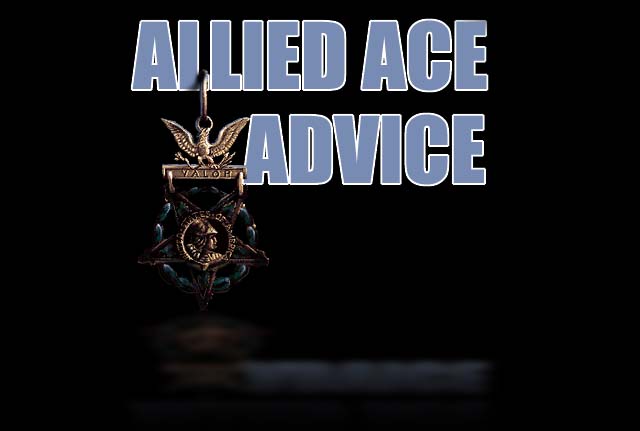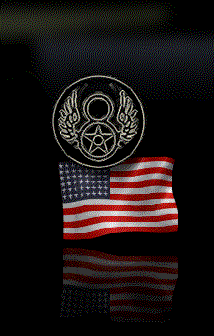
European Air War

Lessons learned: USAF
This material was included in the original 1998 release of European Air War by Microprose.
Although individual RAF and USAAF Aces didn't come close to the personal achievements of the Luftwaffe Experten, the collective accomplishment of their air arms did prove decisive. Many factors contributed to disparity in total victories between the best pilots on either side. Not to discount the accomplishments of the Luftwaffe's Western Front Experten, it must be acknowledged that those Luftwaffe pilots who served on the Eastern Front had the advantage of a poorly piloted, target-rich environment (on the average, some Soviet fliers were actually exceptional pilots). And opportunity certainly played a part on the Western Front as well. "Johnnie" Johnson (the leading British Ace with 38 victories), while comparing his record to that of Josef Priller (101 victories, all in the West), qualified the difference by saying, "…we both fought over the same territory for about the same time, but he saw many more hostile airplanes than I did."

Operational tempo contributed to this disparity as well. Germany kept her best pilots in the air as much as possible, while the Allied forces rotated units "off the line" more frequently. With a much greater sortie rate, the odds were tipped in favor of the Luftwaffe, both to engage the enemy and also to meet the risk of being shot down. The latter reality makes the accomplishment of the Experten even more admirable, as many of them were shot down numerous times over the course of the war yet continued to contribute right up until the end, provided they avoided death or capture.
Finally, a tip of the hat must be given to the superiority of German tactics early in the war. As noted previously in this guide, most of these same tactics are still in use today. At the time, however, the RAF refused to abandon World War I vintage Fighting Area tactics (at least at the level of official policy). Many squadrons leaders saw the fallacies of these tactics as early as the second month of the Battle of Britain, however, and began modifying them internally. Unfortunately, RAF discipline and hierarchy being what it was, most of this innovative tactical thinking wasn't adopted and disseminated to the force as a whole until mid-1942. For an appreciation of Fighting Area tactics, see the Battle of Britain Strategy section below.
You should not in any way discount the advice of Allied Aces however; most of their war records still exceed the accomplishments of all other pilots in history excluding those of Luftwaffe Experten, including the best of the best today. Consequently, let's kick back in the ready room and gain the wisdom of their insights, along with some choice comments by other senior Allied pilots:
In a dogfight such as this, when the odds are heavily on your side, there is a great temptation to lower your guard, to get in close, and hammer your enemy until he falls. Too many pilots concentrate on one target and forget to keep a sharp lookout for friend or foe; too many airplanes converge, in a dangerous funnel like movement, on the single quarry and the risk of mid-air collision is high.
Air Vice Marshal J.E. "Johnnie" Johnson, RAF
Lessons Learned: Situational awareness and observational discipline are the attributes that differentiate an amateur and a professional. If you want to succeed in air combat, or even simply survive the war, you must master these critical pilot disciplines.
The German is a master at using stooge decoys who would probably be as helpless as they look, if half the Luftwaffe were not keeping a jealous eye on them from the Sun.
Captain Reade Tilley, USAAF
Lesson Learned: The enemy is the master of surprise. You must be ever vigilant to avoid being surprised, because it completely sacrifices the tactical initiative to the enemy. In combat, you must be proactive, not reactive to be successful.
"When attacking an inferior force we use only the strength necessary and always maintain a flight or element as top cover."
Lt. Colonel Gerald R. Johnson, USAAF
Lesson Learned: Strategic reserves are important whenever you can afford to maintain them. Air combat may be scientific in nature, as evidenced by the emphasis on energy management in this text, but it is also unpredictable. You don't know if the enemy forces you've just spotted are the entire force or only a portion of it. You also cannot assume an interlude between interceptions by multiple enemy units. As such, although you don't want to purposefully hold back sections that are needed in the current fight, you must balance the current threat against the potential threat when deciding which of your forces to commit.
In aerial warfare, the factor of quality is relatively more decisive than the factor of quantity.
Major Alexander P. de Seversky, USAAF
Lessons Learned: Know the capabilities of your aircraft and those of your enemy. Learn the capabilities of the pilots in your squadron such that you can anticipate their contribution in the air. Being outnumbered isn't a disadvantage if you fight smartly, with position, energy advantage and surprise contributing to your inherent firepower.
When actually firing at an enemy aircraft you are most vulnerable to attack. When you break away from an attack always break with a violent skid just as though you were being fired at from behind. Because you probably are.
Captain Reade Tilley, USAAF
Lesson Learned: Never stop thinking defensively! But there are other points of view which, on the surface at least, appear to contradict this axiom. We'll examine those now, then put the group in the proper perspective.
The best individual defensive tactic is a hard and fast offensive, regardless of the odds.
Major William D. "Dinghy" Dunham, USAAF (16 victories)
And
Fighter pilots don't think of not coming back. They are invincible, or think they are, and they have to be that way…These thoughts are the 'chips' we carry on our shoulders, and they have to be there--arrogant, egotistical chips mellowed by flying technique and experience and fortified by the motto, 'Attack!' Never be on the defensive. Shoot down the enemy before he can shoot you down. You are better than he is, but don't give him a chance. He may get in a lucky shot…
Colonel Robert L. Scott, Jr., USAAF (10 victories)
Lessons Learned: Be aggessive and take the fight to the enemy, but don't get cocky. If you do, sooner or later, you will get burned. When viewed in conjunction with Captain Tilley's quote, it all boils down to this: the major difference between an Ace and a casualty of war lies in attitude. If you temper your aggression with a strong survival instinct and discipline to back it up, your chances of surviving the war as one of the leading combat pilots increase significantly.
A squadron commander who sits in his tent and gives orders and does not fly, though he may have the brains of Solomon, will never get the results that a man will, who, day in and day out, leads his patrols over the line and infuses into his pilots the 'esprit de corps'.
Brigadier General William "Billy" Mitchell
Lessons Learned: In EAW, your performance as a Squadron (and later Group) Commander has a decisive impact on the performance of your men. Leadership by example is the watchword of the war. If you remember from the discussion on morale, you can influence the morale of your men two levels in either direction. And since morale acts as a modifier of pilot skills, this impacts the performance of the squadron as a whole, regardless of the type of mission you are ordered to perform.
If at all possible, the enemy fighters should be avoided completely and strict attention be given to attacking the enemy bombers. With a high- speed airplane of the P-38 type this is entirely possible…If the attack is delivered swiftly and the breakaway completed, the enemy fighters can be avoided easily. The initial attack should be designed to break up the bomber formation. If this plan is successful, the squadron can then break down to flights and proceed to pick off stray bombers. If the formation is not broken, the squadron attack should be delivered a second time.
Captain Thomas J. "Tommy" Lynch, USAAF (20 victories)
Lessons Learned: This is fairly straightforward squadron doctrine. Although you won't perform a lot of intercept missions against bombers as an Allied pilot (except in the BoB campaign), you should be aware of this philosophy because the enemy will certainly use it against you during the strategic bombing campaign in Europe. And because of that, here are a couple of thoughts on close escort duties.
In escorting bombers it is a good idea to range out on the sides, front and rear and hit enemy fighters before they can get to the bomber formation, but do not run off on a wild-goose chase and leave the bombers unprotected.
Major George Preddy, Jr., USAAF
And
For each bomber group we provided one squadron of P-38s for close and one squadron for top cover. The other two P-38 squadrons made a fighter sweep three to five minutes ahead of the bombers.
Colonel Charles W. King, USAAF
Lessons Learned: Although you won't command four squadron formations like Colonel King describes in EAW, you can employ tactics like this on a smaller scale. The key lesson to derive from these quotes is that flying close escort does not mean sitting back and waiting for the enemy to come to you. If you do so you are allowing him to dictate the terms of the ensuing engagement. Instead, be proactive to scout for his approach and retain some measure of the initiative for yourselves. In the European campaign, you will perform more close escort missions than any other type, so you must internalize the wisdom of these pilots, wisdom validated by Luftwaffe Ace Adolf Galland as well:
At the start the American escort also made tactical mistakes. Instead of operating offensively against our fighter units, they limited themselves to a close direct escort. They tried to repulse our attacks in the close vicinity of the bombers. In doing this they went through the same negative experiences as we had done over England and Malta: the fighter pilot who is not at all times and any place offensive loses the initiative of action. The American fighters learned and readjusted themselves. After January, 1944, they went over to aggressive free-for-all fights in the approach sector.
The final lesson to take away from all this is that you enjoy the benefit of perfect historical hindsight. You need not repeat the mistakes of the past and sustain inordinately high casualties before adopting the tactics and strategies that eventually proved successful.
